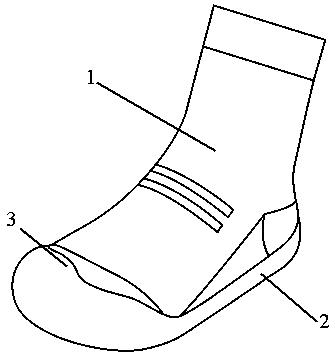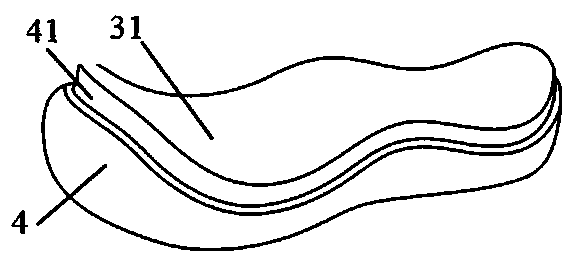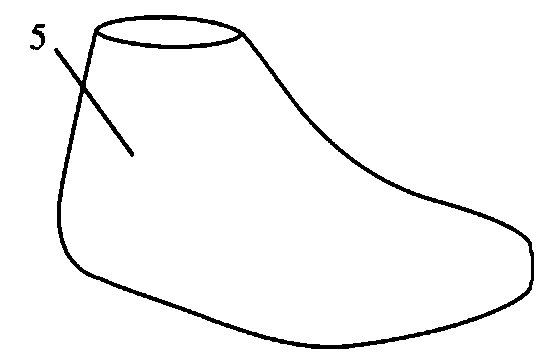Infant shoe and technique for manufacturing infant shoe
A process method and technology for baby shoes, applied in the field of wear, can solve the problems of flat feet, increase the burden on parents of babies, and hard soles, etc., and achieve the effects of preventing flat feet, good fitting effect, and firm adhesion.
- Summary
- Abstract
- Description
- Claims
- Application Information
AI Technical Summary
Problems solved by technology
Method used
Image
Examples
Embodiment Construction
[0028] The baby shoes and the manufacturing method of the baby shoes of the present embodiment will be further described in detail below with reference to the accompanying drawings and specific embodiments.
[0029] like figure 1 As shown, the baby shoe of this embodiment includes a sock body 1 and a sole 2 . The sock body 1 is preferably made of pure cotton fabric. When the baby is wearing the sock body 1, the sock body 1 wraps the baby's feet and parts above the ankle, and the sock body 1 ensures the comfort of the baby when wearing.
[0030] The flexibility of the sole 2 in this embodiment is selected to have a hardness slightly greater than the hardness of the sock body, but softer than the prior art rigid sole, and the sole 2 can be arbitrarily deformed with the deformation of the infant's sole when the infant is wearing it. , to ensure that the baby is prevented from catching a cold when playing on the floor for a long time, and the bottom of the sole 2 is adapted to th...
PUM
 Login to View More
Login to View More Abstract
Description
Claims
Application Information
 Login to View More
Login to View More - R&D
- Intellectual Property
- Life Sciences
- Materials
- Tech Scout
- Unparalleled Data Quality
- Higher Quality Content
- 60% Fewer Hallucinations
Browse by: Latest US Patents, China's latest patents, Technical Efficacy Thesaurus, Application Domain, Technology Topic, Popular Technical Reports.
© 2025 PatSnap. All rights reserved.Legal|Privacy policy|Modern Slavery Act Transparency Statement|Sitemap|About US| Contact US: help@patsnap.com



